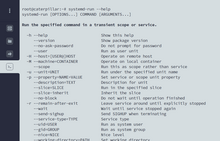When we use Fail2ban we can be sure that brute force attacks will not prosper on our server, but the drawback of this type of protection is that we ourselves, the end users can be blocked or banned by exceeding the maximum attempts allowed in each service, if we have somewhat flexible configurations that only block us for a few minutes and hours there should be no problem, we just wait. If we use days to determine the blocking time or that it is an indefinite block, and we find ourselves blocked, we can use a quite simple command to unblock IP addresses.
Unban or unblock IP addresses
To unblock or unban a single address or list of IP addresses, we execute:
sudo fail2ban-client unban 1.1.1.1 2.2.2.2We can unban a single IP or multiple IPs with the same command, only separating them with spaces between each address.
Unban or unblock all blocked IP addresses
If we want to unblock all blocked IP addresses, we use:
sudo fail2ban-client unban --allCheck if an IP address is blocked
If we want to know if an address or multiple IPs are blocked before unblocking it, we execute the command, with the IP addresses separated by spaces:
sudo fail2ban-client banned 1.1.1.1 2.2.2.2With this, it will show us in which services the IPs are blocked. This last command is useful if we want to know if we have a connection problem, with the server or if we are really blocked. Since in many cases, network problems are more common than we think, or even a bad configuration can leave a server completely blocked.
Unban or unblock an IP address from a specific Jail
Fail2ban typically handles so-called Jails, which are basically different sets of rules for different system components. In other words, for example, there is a Jail for ssh, which sets different rules for blocking failed attempts for SSH connections only. For example, if we want to unblock an IP only from a Jail, we have to specify it.






